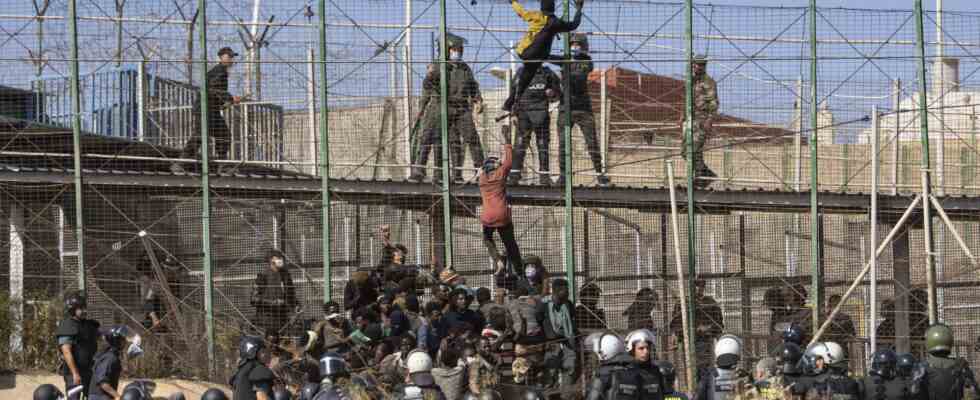Status: 06/24/2022 2:47 p.m
Hundreds of people tried again to climb the border fence between Morocco and the Spanish enclave of Melilla. Security forces pushed most of them back – but some still made it across the border.
According to media reports, hundreds of migrants stormed the border fence between Morocco and the Spanish exclave of Melilla. The Europa Press news agency reported that they had broken through one of the gates in the border facility, citing the police.
The Spanish government office in Melilla announced that a total of around 2,000 people had tried to reach EU territory in this way. Most were stopped by Spanish police officers on one side and Moroccan security forces on the other side of the six meter high barrier.
However, a “large group” of people from sub-Saharan Africa who had been “organized and violent” managed to gain entry into Melilla. The AP news agency reported more than 130 people.
Several people injured
Video images on the Internet showed how mostly young men ran through the streets, beaming with joy, singing and dancing. Some were injured when they stormed the border facility, which consists of two parallel, six-meter-high barbed wire fences.
According to Spanish media reports, 116 Moroccan officials were injured the day before when they tried to keep around 500 migrants away from the border facility. A police officer had to be treated in the intensive care unit of a hospital.
Several hundred migrants had already managed to get to Melilla over the border fence in March. Ceuta and Melilla, which form the only EU land borders in Africa, are regular destinations for people hoping for a better life in Europe. The border fences are equipped with barbed wire, video cameras and guard platforms.
Years of dispute between Spain and Morocco
It was the first mass rush to the exclave since Spain and Morocco normalized diplomatic relations in May. These were burdened by a year-long dispute over the former Spanish colony of Western Sahara, which was annexed by Morocco in 1976.
After the leader of the Western Sahara independence movement received medical treatment in Spain, Morocco relaxed its controls along the Spanish enclaves of Melilla and Ceuta last year, apparently in retaliation. In March, more than 3,500 migrants stormed the Melilla security fence, with almost 1,000 getting through, according to Spanish authorities.
In March, the Spanish government then implemented a diplomatic change of course. Madrid recognized the Moroccan autonomy plan for the disputed area, which envisages, among other things, offering Western Sahara autonomy under Moroccan sovereignty. Since then, ferry connections between Spain and Morocco have been resumed and police cooperation programs have been launched in the Spanish exclaves, among other places.
Exclaves as a way to the EU
Morocco became independent from France and Spain in 1956. Nevertheless, Spain continues to hold two exclaves there: Melilla and Ceuta, 250 kilometers further west on the Strait of Gibraltar. Both are claimed by Rabat.
Tens of thousands of people, mostly from sub-Saharan Africa, often wait in the vicinity of the two areas for a chance to enter the EU. Usually several hundred people try to surprise the border officials and get across the border.

